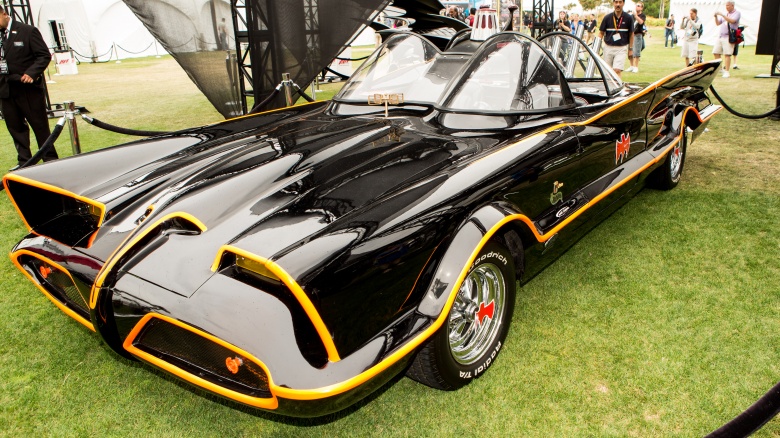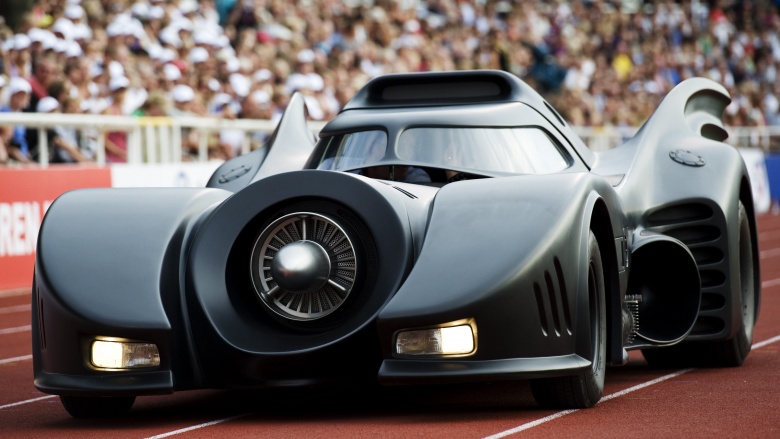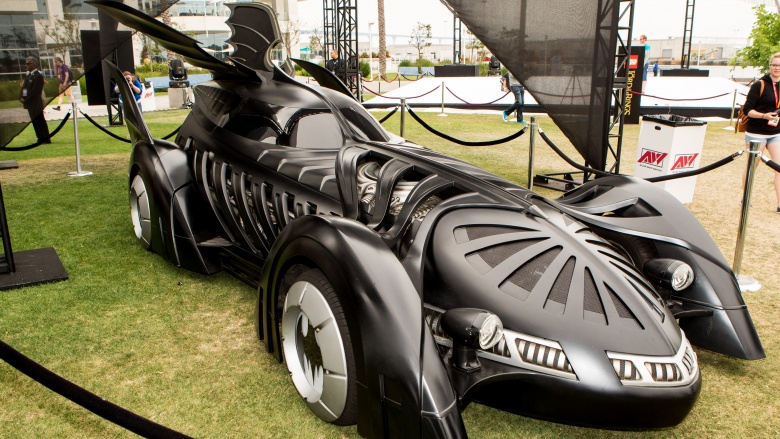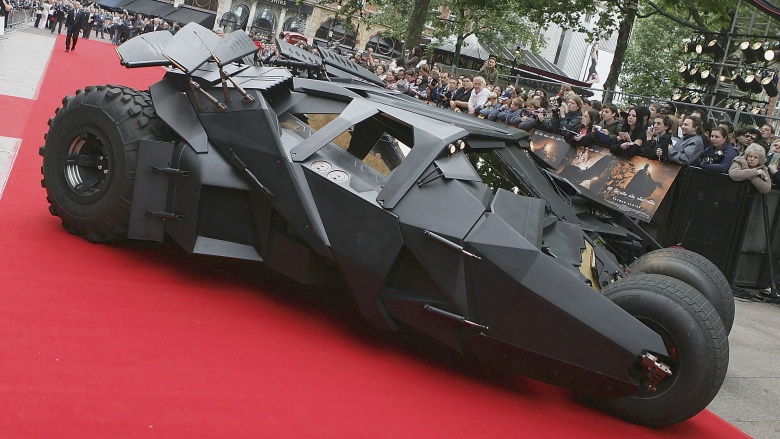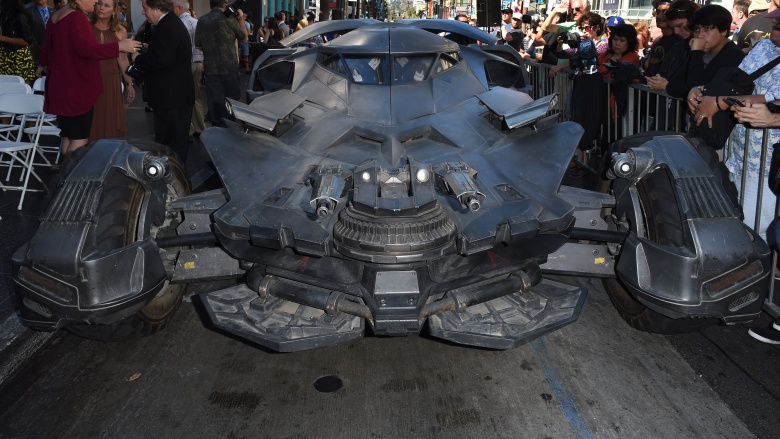Batmobiles Through The Years
The Batmobile has always been a bit like a Bond car, but without the need to be discreet. Capable of appropriately insane feats of speed, agility, and acrobatics, the Batmobile walks the walk and leaves the talking to Batman. In the early years of the Batman comics, before the original TV series kicked off in 1966, Batmobiles ranged from ordinary (but fast) cars, to ordinary and fast but with a bat logo and a fin or two. It wasn't until the first actual Batmobile was built for the original television show that it came into its own, and started earning its place as one of pop culture's most iconic cars. But the Batmobile is also something of a fashion victim, always trying to make a statement and set a new trend. And as you'll see, while most of the time it hits the nail on the head, occasionally it misses and just dings the paint—which is actually fine because that's what the Batmobile is built for.
Original TV series and Batman: The Movie
Although it looks a bit dated now, the first Batmobile was something of a game changer when it appeared with Adam West and Burt Ward in 1966. Winging its way onto TV screens with exotic styling, amazing gadgets (for the time), and the soon-to-be-standard jet engine, the original Batmobile was a red and black snapshot of 1960s sci-fi style. Custom car builder George Barris produced the original Batmobile; Barris inherited the contract when the deadline was dramatically shortened, and he actually owned the car for most of his life after the show ended. Barris and his team chose the Ford Futura concept car from 1955 as the starting point for their build, and since it came already fitted with the twin bubble canopies and angled tail fins, they were able to complete the car in just six weeks. The original Batmobile stayed pretty much the same over the life of the series, with only a new steering wheel, number plates, and a few new gadgets appearing in that time. After the series ended, the gloss black paint was mysteriously replaced with matte black flocking, or "bat fuzz", for a while. But in 2013, when Burris finally put the car up for auction, it had been returned to its original gloss black, which might go some way to explain why it sold for $4.2 million—the Batmobile: the only car that gains value when you drive it off the parking lot.
Batman & Batman Returns
In 1989, Tim Burton was called in to direct the next outing of the Caped Crusader, and he hired production designer Anton Furst to build the Batmobile. And as production budgets had increased significantly since 1966, he didn't have to mess around modifying a preexisting vehicle, but could let his imagination take off. As a result, the car Furst built was a total hit: it combined sleek clean lines with dominant and aggressive styling, while borrowing from vintage car designs and introducing the long narrow style that would become the standard for some time to come. By tapping into and reflecting the darker side of Batman's character, and combining that with clean styling, this version of the Batmobile marks a highpoint in the evolution of the car that hasn't been approached since.
Batman Forever
Under the direction of Joel Schumacher, the Batmobile hit rock bottom. No doubt in an effort to make the franchise his own, schumacher hired Barbara Ling to redesign the car—but to call it designing is a bit of a stretch since she mostly just took Tim Burton's Batmobile and glued a bunch of bad ideas to it. Looking less like the car of a superhero, and more like a tragic collision between a landspeed record attempt and an S&M conference, the Schumacher Batmobile is an unfortunately literal attempt to combine the words "car," "scary," and "bat." But he must have realized his mistake pretty quickly, since it doesn't take the Riddler long to put a bomb in it. Even superheroes shouldn't leave their car unlocked.
Batman and Robin
The fact that this Batmobile is about as bad as the last one can be explained by the fact that it is another attempt by Joel Schumacher and Barbara Ling to get it right—which they didn't. In an effort to give it more screen presence, they decided to make the car bigger, but then they removed the passenger seat and the roof, leaving Batman alone and exposed. What they should have done was pretend they were filming Tom Cruise and park the car closer to the camera and shoot from underneath. It also retains the bizarrely literal bat wing fins of it's predecessor (the largest to ever be attached to a Batmobile—because that's what it needed). It also kept the distracting and apparently superfluous flashing and pulsing lights jammed in every crevice, which served no purpose and would probably just earn Batman a ticket in the real world. The vehicle measured a massive 30 feet from front to back, and actually managed to hit 140 miles per hour when it was given the chance—but since it had the fewest gadgets of any of the Batmobiles, Batman would have to rely on the vehicle's inherent phallic metaphor to subdue his enemies.
Batman Begins, The Dark Knight, and The Dark Knight Rises
The most radical shift in Batmobile design since the Tim Burton movies, this iteration was referred to in the movies as the "tumbler." Conceived as a military prototype that never entered production, the tumbler is closer to a tank than a car—but with highly exposed wheels instead of a puncture-proof track system. Four of the vehicles were built for the movies at a cost of $250,000 apiece, and at nine feet wide and 15 feet long they were the first Batmobiles to be completely built from scratch. The styling is also a shake up, ditching the impractical bat motif of the Schumacher/Ling designs in favor of a more practical and paramilitary aesthetic—perhaps highlighting a more contemporary interpretation of Batman's activities in Gotham City. That said, a bit more "bat" would have been nice, which surely could have been worked into the armor arrangement without much trouble. And why did it have to be so ungainly? The fat wide design and those great big tires definitely give this behemoth the much desired road presence. But while all the impressive crushing and ramming and lethal ordinance it launches is very impressive, it doesn't work well as a reflection of Batman. If this vehicle were a true representation of Batman, he would have to weigh 350 pounds, wear steel armor, and ride a big-wheel.
Batman v Superman
To replace the Batmobile after The Dark Knight Rises, a new vehicle was designed for Batman v Superman: Dawn of Justice. Looking a bit like the tumbler after a year on the Atkins diet, it's a clear evolution of the Dark Knight edition that is still wide, but with cleaner lines and a more sensible wheel arrangement. It still looks solid and heavily armored, but the wider wheels and lowered profile suggest the addition of some much needed maneuverability to the package—which still isn't enough to stop Batman from wrecking what looks like the best Batmobile in years.

